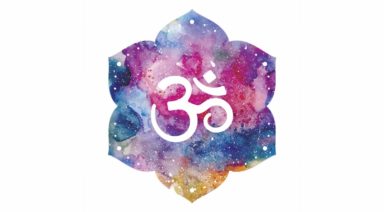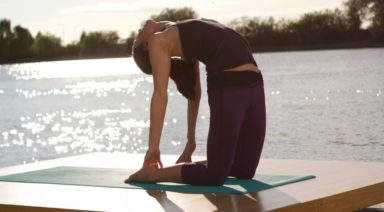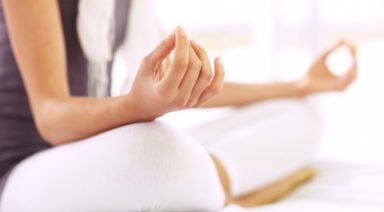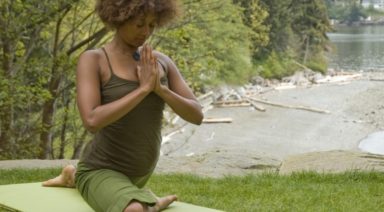10 Reasons to Eat Raw During Your Yoga Teacher Training

Yoga teacher training is a life-changing experience that will require you to find focus, strength and energy if you want to learn, achieve, feel, experience and become your higher self. Being your true self means being devoid of the need to be egotistical, small-minded and petty. Remember that you are part of a much bigger picture that is inextricably connected to all life forms, including nature. Only then do you have the ability to share your knowledge through teaching.
Teaching is the absolute best way to continue this lifelong discovery at an extensive level of depth. It is a natural and likely consequence of a teacher training. In this way, sincere students learn yoga for the correct reasons and become great teachers for the correct reasons.
During a teacher training, help is needed from your teachers, fellow students, inner self, mind and body. One of the strongest tools for helping your body to function well, is eating the correct diet. Raw food has the nourishment and components that supply you with all the necessary energy, vitality and optimal cell reproduction. It helps you to keep going.
Good food has to be pure in order to keep your body healthy and alert, strong and light. Raw food helps your body and mind cope with the intense schedule and inner exploration that the best yoga teacher trainings provide. This also correlates with the first yama: Ahimsa (Ahimsa meaning nonviolence in thought, word and action to yourself and others). This promise to yourself is taken from the Yoga Sutra’s (2.35), the definitive description of yoga recorded and inspired through experiential research. I look at ahimsa as an enlightened commandment.
How Raw Food Will Help You Keep Up With the High Demands of a Yoga Teacher Training
1. Raw food leads your body towards natural health.
By eating raw you are on your way to a state of self-fixing. As the human body has the ability to regenerate cells continuously, having a raw food diet will enable your body to become pure and renewed through the intake of uncooked food.
2. Your body performs better when eating raw.
Eating in this way allows your body to feel agile and manageable. Your digestion uses less energy therefore giving you more vitality for your yoga practice. When you only practice a few times a week this might not be so important for you, but during four or more weeks of intensive training you will need your body in order to keep up with this experience.
3. Your body needs vitamins and minerals.
Raw food is rich in natural vitamins and minerals that are easily digested and absorbed by your body.
4. Raw food increases your awareness mentally, physically and spiritually.
This is important if you want to have the capacity to collect and process all the information given to you.
5. Raw food boosts your natural energy levels
In abundance, so you can rely on it to function at a top level during this extended time.
6. During a life changing experience, changes need to happen in your body too.
The body purifies itself from toxins with a raw food diet. Being clean and unpolluted allows you to reconnect with your true inner self.
7. Eating raw food puts you in a harmony with nature.
Mens sana in corpore sano (a healthy mind in a healthy body). To become a more hale and hearty, happy and sensitive person you need to have a coherent, high functioning body.
8. Food promotes longevity
According to the Bhagavad Gita (xsll.8), saatvic (pure) food promotes longevity, wellbeing, strength, goodness, happiness and pleasure. They are also rich, juicy, agreeable and nourishing.
9. Raw food prepared with an attitude of love increases our prana (life-force energy)
Which is essential if we want to sustain and utilize our maximum amount of effort wisely.
10. Raw food helps to turn your body into a temple for your mind and soul.
According to Patanjali, who wrote the most classical text on yoga, “the purpose of yoga is to lead to a silence of the mind” (yoga sutra 1.2). Through yoga, commitment, patience and compassion for yourself, you can achieve the silence of the mind, the freedom of the soul and joyfulness in your life.
Select the Best Yoga Teacher Training for You

When the spark of teacher training first ignites in your heart, a few things start to happen. You start to approach your yoga practice in a different, albeit intimate way, considering what it would be like to teach what you are experiencing. You develop an even deeper respect for your yoga instructors and begin to pick up on the subtle details of their creative offerings. But most of all you start to see “YTT” everywhere you look. It’s like that magic thing that happens when you buy a car; you start to see the same model on the road and in parking lots. Once you open up to the possibility of becoming a teacher, you become aware of all the incredible ways you could go about doing it. And if you dared to Google “yoga teacher training,” then you probably learned about programs and styles that you had never even heard of before. This can be overwhelming at first–it can feel like you require training to choose the right training. Then again, you are committing to a tremendous investment both financially and energetically; it’s only natural that you want to do your homework.
Before you even start the selection process, I encourage you to try this journaling exercise to gain clarity around why you want to attend a teacher training in the first place.
- Do you want to teach yoga or are you more interested in deepening your personal practice?
- What is your most natural mode of learning (visual, kinesthetic, auditory) and what is your ideal learning environment?
- What is it that sparked your interest? Was it the practice, was it a particular teacher? What was the impetus for the shift from practicing on your mat to seeking a program for deeper study?
- In your yoga vision, are you teaching full-time, part-time, or as a hobby? Does this teaching supplement your current work/projects in any way?
- What is the state of your current life work balance?
Having answered the questions above, you are now clear in your teaching intention and can use it as an anchor during the process of choosing a program. Stay open as you start searching because you may not even know of something you want in a yoga school until you find it! When you are ready to start looking, here are the top 5 things to consider when selecting yoga teacher training.
- Teacher Trainer(s).
Everyone and their uncle seem to be offering a teacher training program these days, so what exactly should you look for? It is important to understand whether you want to train with someone that you already have a relationship with or if you are comfortable selecting a teacher based on their core values alone. You’ll discover that many programs are offered by a single lead trainer whereas other programs have guest teachers or teaching teams. Is this relevant to how you want to learn? Is it important for you to train with a man or a woman? If so, why?
Know your teacher’s teachers! In our modern world, hatha yoga is practiced in a myriad of styles and forms, make sure you want to practice (and teach) the style of yoga that is being offered by the trainers you choose. This may seem obvious, but you don’t want to go to an Ashtanga teacher training if it is a Kundalini practice that lights you up! Try to understand who your teacher has practiced with and learned from. What is their yoga lineage and how does this breathe life into your teaching intention?
Finally, it is not absolutely necessary that you love everything about your teacher, but it is important that their teaching inspires you and they are capable of providing you the depth of study that you’re after. Some of the best teachers aren’t always well liked because they challenge us to be the very best versions of ourselves–that is what makes them great teachers.
Once you have narrowed your search to a handful of instructors, start connecting! Reach out to the teaching staff for more information, ask to connect with recent graduates in your area, attend an information session, and read as many reviews and testimonials as you can find!
- Content and Curriculum
This is where your reasons for wanting to pursue deeper studies in yoga come into play. You must decide what it is that you want to learn without really knowing what it is that you don’t know! It’s the ultimate yoga conundrum. Chances are, if you have an interest in teacher training, you’ve at least practiced some asana. Maybe you’ve read about the yoga sutras and other texts. Perhaps you’ve dabbled in Ayurveda or heard teachers talk about the heart chakra. Or, maybe you only show up to class for savasana. In any case, it helps to understand the core areas of study available. For simplicity, they are presented here based on the definition of yoga practice in the sutras: tapas svadhyaya ishvara pranidhana kriya yogah.
Tapas (heating, churning, purifying). This means actually moving your body and studying how/why it works. Areas of study include:
- asana, pranayama and meditation techniques
- physical practice
- physical anatomy (bones, muscles)
- energetic anatomy (chakras, subtle body)
- Ayurveda
Svadhyaya (self-study). In the context of yoga teacher training, this is learning what it means to be a teacher and how to apply what you know. Areas of study include:
- how to teach/student teaching
- hands-on assisting
- observation of classes
- communication & student psychology
- creating healthy boundaries
Ishvara Pranidhana (surrender to the absolute). This is a recognition that yoga (and teaching yoga) is not about you. It is a part of something much, much greater and goes beyond the purely physical domain. Areas of study include:
- history & philosophy
- study of source texts
- ethics & yogic lifestyle
- karma yoga
In addition to the content that is available, it is important to understand how it will be transmitted. Do you want to learn a set sequence that you can begin teaching immediately? Do you want a program that supports an equal focus among the above categories or do you want more emphasis in a particular area? Do you need to learn how to be a teacher or is this something that already comes naturally to you from your background?
Once you understand the range of yoga “majors” that are available, you can select the most appropriate “degree plan” for you. Review the course outline for any programs that capture your interest and make sure you understand the topics that will be offered and the depth of study in each.
- Timing, Duration, and Location
The timing of the program has to be convenient so that you can be your most receptive self. Still, there’s no absolutely perfect time to take the leap. There will always be a million reasons to say no, but it only takes one really good reason to say yes! Furthermore, there are benefits to both destination and residential formats. Does it work for your life rhythm to disconnect and retreat for 3-4 full weeks or do you want to maintain a regular schedule and create space for training on the evenings and weekends? In a destination training, you get to unplug and fully immerse yourself in the learning. The continuity of the teaching often allows you to go deeper and experience the transformation of fire. However, a residential program allows you space to integrate the learning between sessions and share everything you’re exploring in the moment with your family and friends. The transformation happens more slowly, like water eroding the earth, but it can be equally profound.
Once you decide how teacher training fits into your life, you can start to explore different locations. This might mean looking into different studios in your city or different countries in the world. The most important consideration for the location of your program is how it will support your physical, mental and spiritual growth throughout the process. For example, do feel most responsive outdoors or do you prefer a classroom environment? Do you want to practice in a hot studio or does your body feel better without the added element of heat?
My best advice is to find a program that has the best alignment to your yogic journey and let the timing, duration and location details be secondary. With a strong desire to learn and a clear vision, you can make almost anything work once your heart is fully on-board.
- Class Size
This one goes without saying but is worth mentioning all the same. It is no secret that the smaller the class size, the more intimate instruction you might be able to receive from the instructor. However, part of the appeal of teacher training is that you are entering a kula (community) of like-minded humans that you will undoubtedly learn from. With a larger class size, you open yourself up to communion with a wider range of practitioners and skill sets. It is up to you to decide what class size serves your personal study in the most meaningful way.
- Network/Postgraduate Support
It is easy to get so focused on the incredible growth that happens during teacher training that you forget to consider what comes after you graduate. Again, come back to your teaching intention. What do you want to come away with from your program? Do you want to begin teaching immediately? If so, how does each unique school make this a reality for you? Perhaps you see this as the first step in a life-long study and are interested in continuous support when the course comes to an end. What does the postgraduate communication and development look like? This is another great opportunity to reach out to graduates of various programs and see where people have taken their yoga degrees. At the very least, you will be inspired by the incredible creativity and passion that you find along the way.
Finally, searching for a yoga teacher training is not an opportunity to bargain shop. Yoga is not something you can learn all at once. Instead, it continues to unfold as you study, practice and teach. Stay committed to your core values and make a heart-centered decision based on where you want to devote your passion and energy.




































